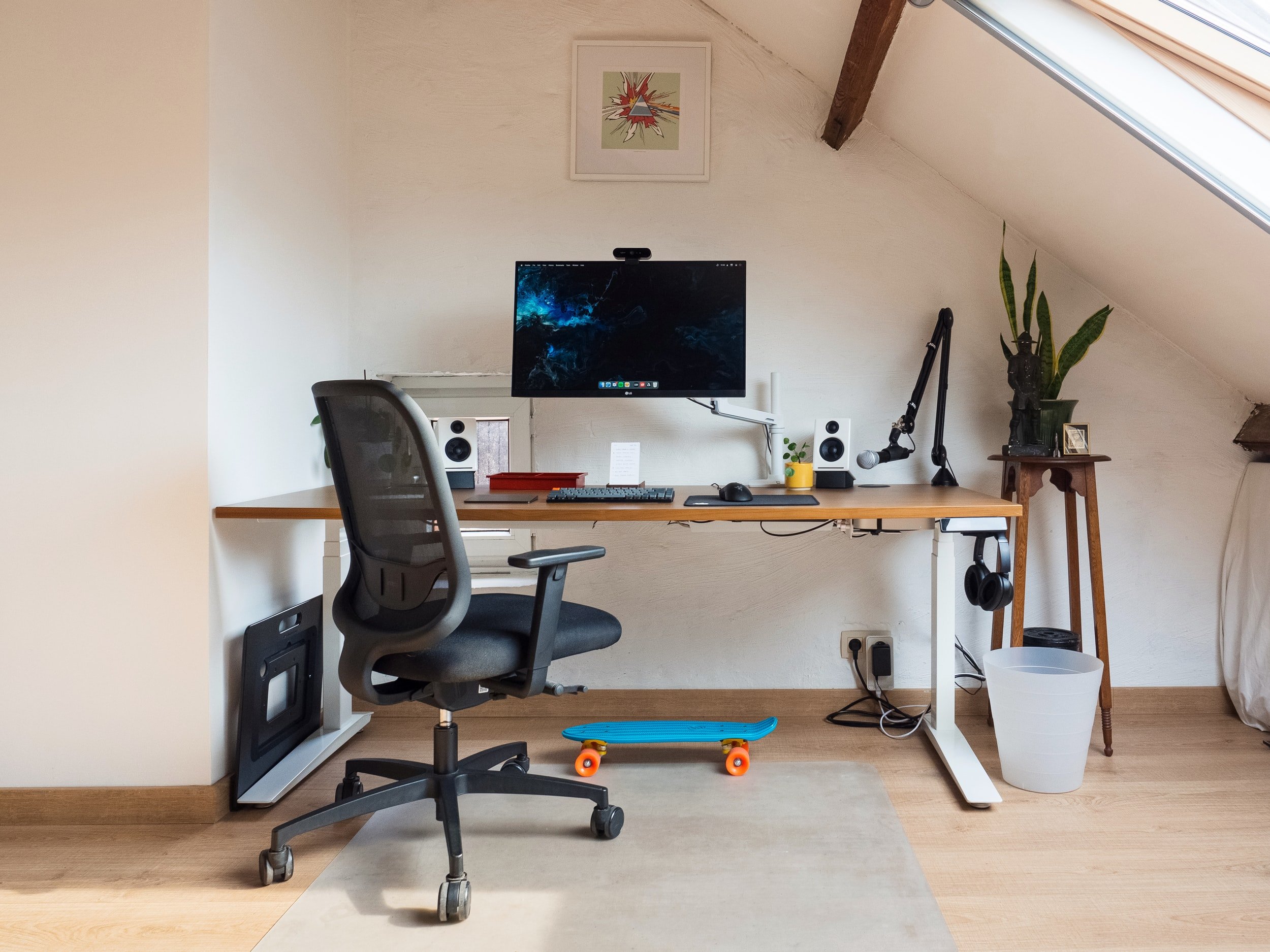Is it Worth Investing in an Ergonomic Chair?
Nearly 3 years since your home became your office, your body’s either pretty achy, or you’re feeling delighted to have splurged on a supportive seat.
She kept coming back to see me, week after week, with recurring pain. She told me it would be gone when she left my office, but within a few days, it would be back hovering over her every move, dictating which activities she could partake in, or which position she could steal away snippets of sleep. I knew then that no matter how helpful my Kinesiology sessions were, her habits at work and home were holding her hostage. So we had a talk about her office chair.
For ten years she had diligently worked in an office perched atop a chair that was much too big for her. Not being the type to complain, she soldiered through discomfort even though the tips of her toes could barely swipe the floor. And so she dangled, for more than ten years, exhausting her muscles, forcing her structural system out of equilibrium, and suffering through debilitating pain.
She described her office set-up in detail and I made suggestions to add more support, the most valuable of which was bringing the floor up to her feet rather than straining to reach the floor. The following week she brought a stool to work to firmly plant her feet on for the first time in a decade, and she unsurprisingly left work that evening completely pain-free. Small ergonomic adjustments have the potential to shift your whole working posture, imagine the possibilities with a fully ergonomic chair!
Working in Offices is Far From New, Albeit Unnatural
Working in offices is far from new, albeit unnatural. Humans have been devolving physically for more than one hundred years evidenced by the construction of massive skyscrapers as early as the 1890s. These mammoth buildings were designed to maximize space for office employees to gather and perform sedentary tasks efficiently. Occupational ergonomics is also far from new, with employers long designing office spaces with attention to details such as glare, acoustics, and of course body positioning. But a current trend that I believe is contributing to the uptick in ergonomic-related work injuries is the emergence of small companies and entrepreneurship. While breaking away from the pack has lifestyle benefits, one drawback is there are no policies, budgets or managers to help you to avoid the highly preventable onset of work-related pain.
Big companies of the mid-20th century made the mistake of focusing on band-aid solutions rather than preventative strategies. Ergonomics finally shifted in the latter half of the 20th century to improve the work environment, aiming to decrease the financial hit that work-place-injuries were amounting to. According to the US Bureau of Labor Statistics, at least 33% of work-related injury cases are ergonomic injuries. This statistic is from 2019, prior to the current pandemic which has presumably only enhanced this social behavioural problem. An additional factor that may not be considered in this statistic is that most self-employed and/or small businesses likely do not have the luxury of time or benefits to justify reporting work-related injuries.
Unless your desk doubles as your shell and you’ve been living under it for a few decades, you probably already knew that a poorly designed chair can cause you a great deal of pain. And now you’re probably wishfully awaiting the announcement of a chair that can make all those aches fade away. Well, I am sorry to tell you that just like we all come in different shapes and sizes, my ideal office chair will differ greatly from yours. And since I am not internet-famous enough to be receiving sample office chairs (nor do I want them!), I have the liberty to share this hard truth with you: find a chair that suits you best.
Tune into this ergonomic chair series if you’re interested in my next journal (coming Wednesday) when I will introduce you to 8 features to look for in your perfect chair. After that, I will share a variety of chair options available to you and finally, I will introduce you to three local professional ladies who disclose their favourite chairs; no shock here, they all differed greatly!
Until then, keep your chin up (but not too high that it shortens your neck), there is hope for you to finish a day of desk work pain-free. By combining an ergonomic setup, some scheduled movement breaks, and the on-demand movement meditations available to you at www.movementRX.com, your cranky back will soon be a long-forgotten visitor.
Don’t miss the next journal. Follow me on IG or FB to stay informed.


